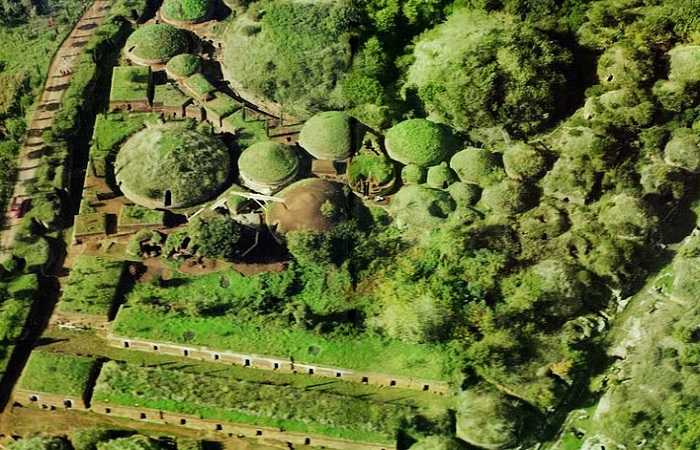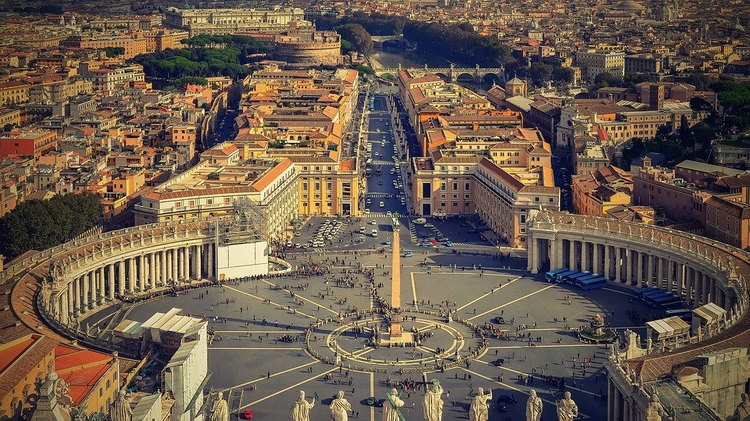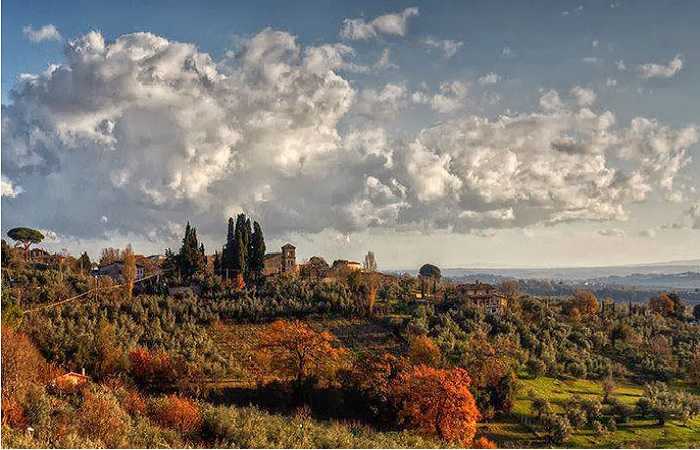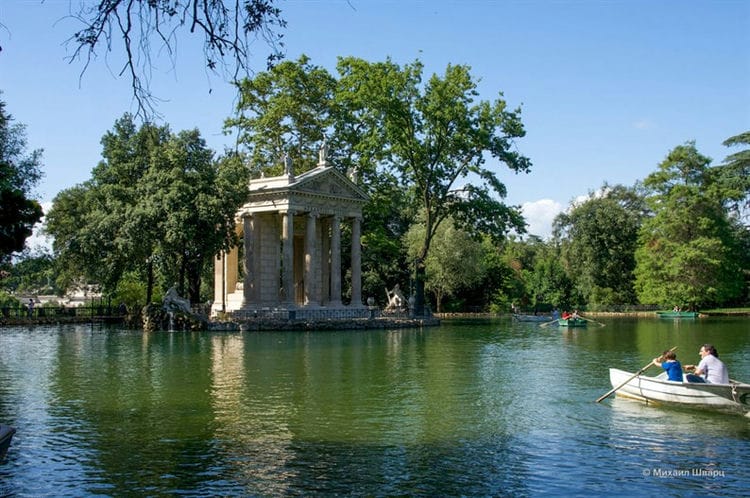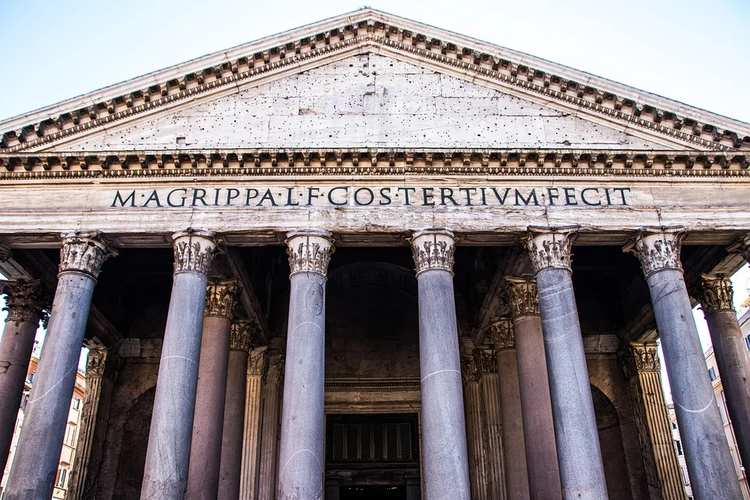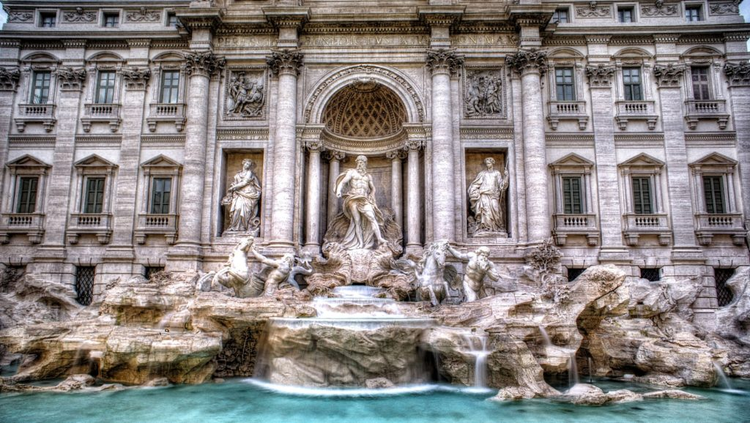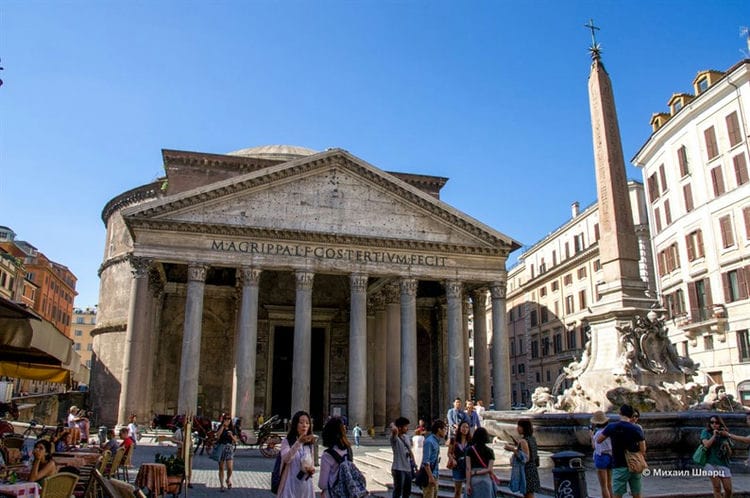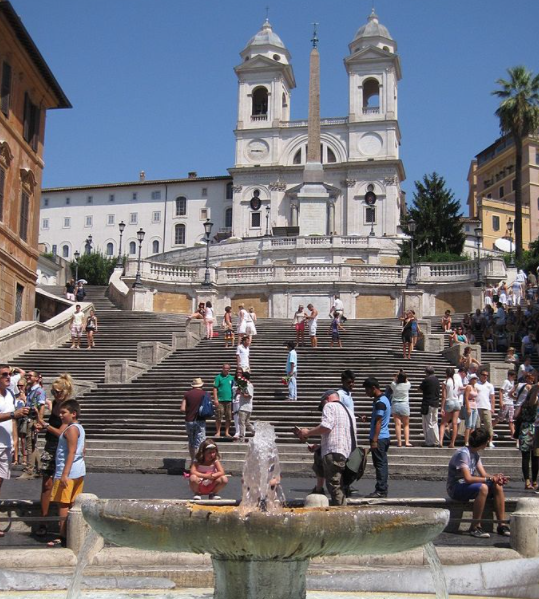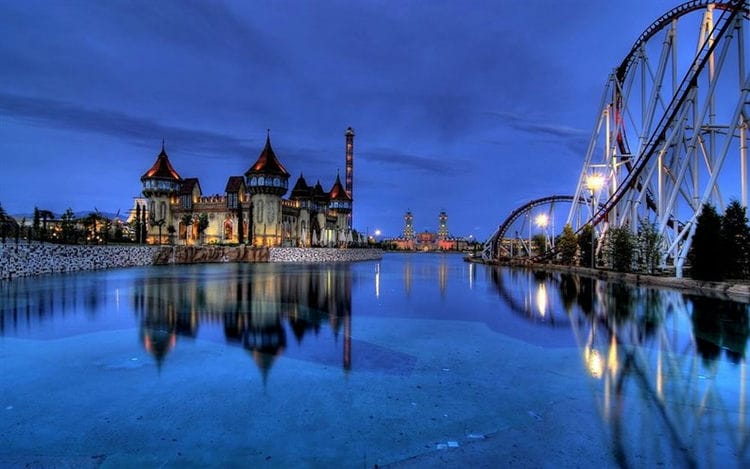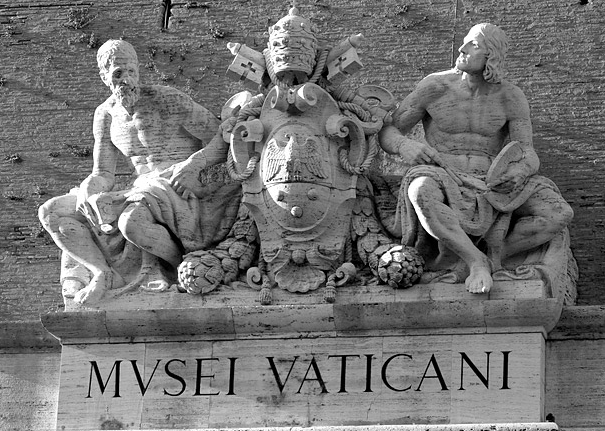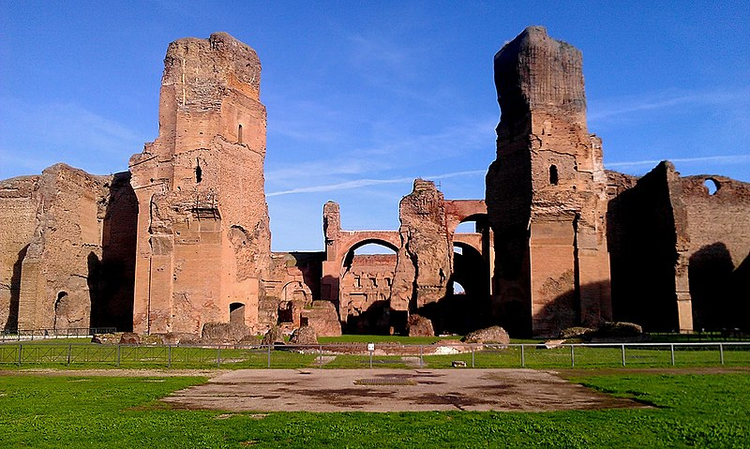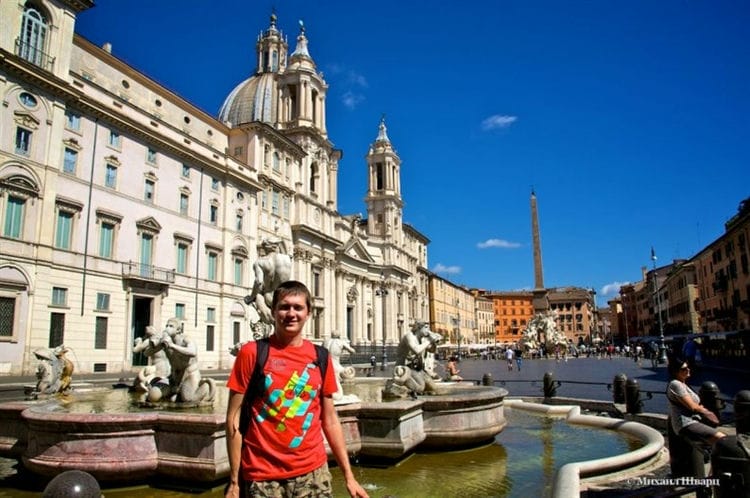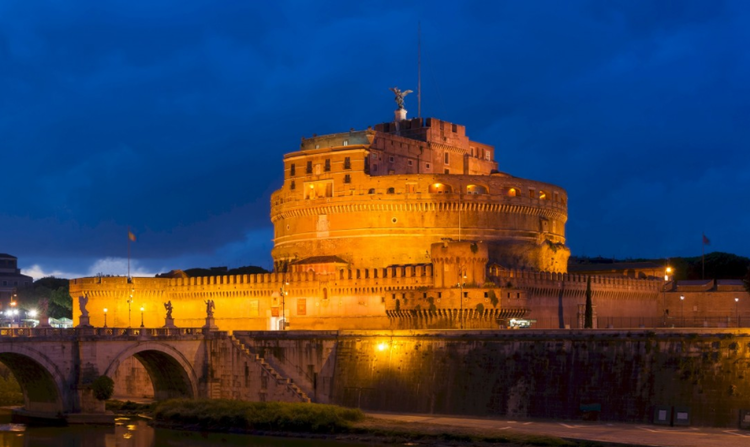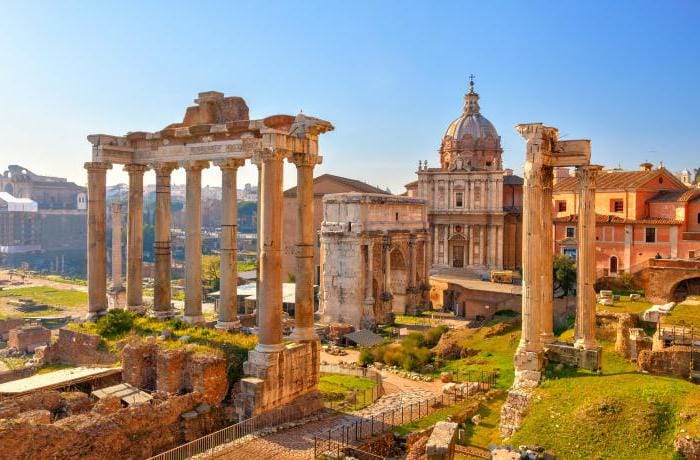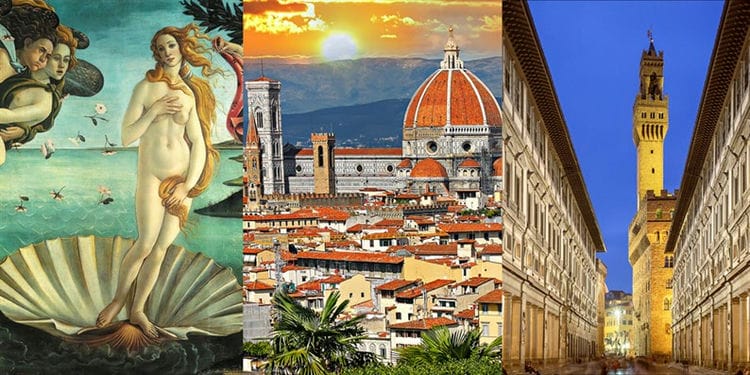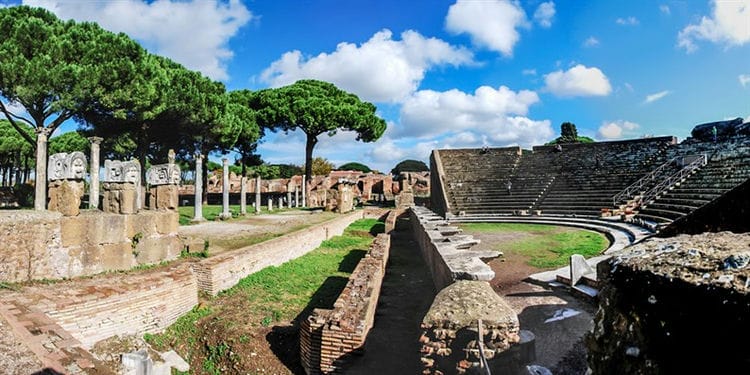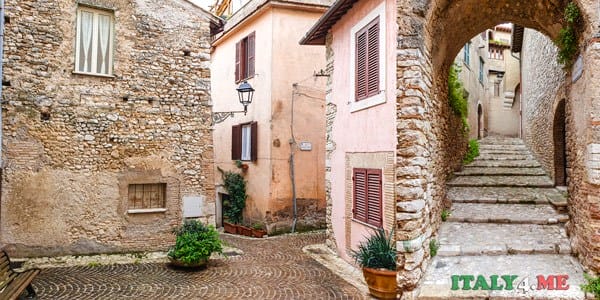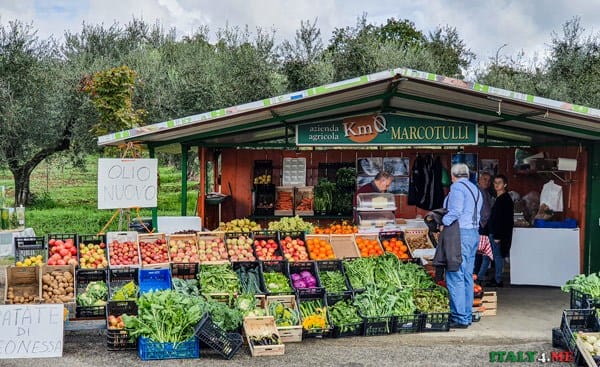TOP 35 sights of Rome: what to see in Rome in one, two, three days and a week. 11 best places to go for free in Rome
History of the city
According to historical reference books, the history of Rome dates back to the 9th century BC. It was at this time that a small settlement appeared on the coast of the Tiber. But this is just an unofficial version. According to official figures, the city was founded in 753 BC. The legend says: “… many years ago, on the banks of the Tiber, Princess Rhea Sylvia gave birth to two sons – Remus and Romulus. Their father was the God of War Mars. The brothers grew up, and when it came time to share power, a quarrel broke out between them. In a fit of anger, Romulus killed his brother and became the first king of the “eternal city”. ” During the existence of Tsarist Rome, seven kings were replaced. Each of them contributed to the development of the city. The first cathedrals and temples appeared on its territory. During the reign of Servius Tullius, a high fortress wall was erected around, nicknamed the Servius wall.
The Roman Empire grew steadily. There was a need for the construction of roads that could establish communication between the city and other Italian colonies. The “Republican period” gave the Romans not the best living conditions – it was almost impossible to buy or build their own housing, prices had tripled, sanitary conditions were at the lowest level, and chaos and disorder reigned on the streets. The heyday of Rome fell on the reign of Julius Caesar. The Senate building was built in the center of the city. Under Emperor Augustus, Rome expanded significantly, his possessions finally overcame the boundaries of the Servian wall. The legendary Pantheon, the Temple of Mars the Avenger and the Temple of Caesar were erected. Roads were laid, a sewerage system and the first water supply appeared, and the first public baths were built.
During the reign of Emperor Nero, a great fire broke out in the city. Most of the city had to be rebuilt from the ashes. The newly emerging houses and buildings were much more practical and more beautiful than the old buildings. Rome shone with new colors. It was at this time that the great and beautiful Colosseum was erected. In the 5th century, the city was repeatedly subjected to barbarian raids and sieges, often passed from one hand to another. In the 6-8 centuries, power over the state and the city passed into the hands of the church. For a long time, the popes held power in their hands, more and more churches and cathedrals were erected. At the end of the 18th century, Rome was captured by French troops led by Berthier. Pope Pius the Sixth had to relinquish power. He was expelled from the city and soon died. In 1798, Austrian troops managed to drive the French out of the city, power passed to the Neapolitan king Ferdinand the First. And after 2 years, Pope Pius the Seventh managed to return the power to the church. In the early 19th century, Rome was invaded by Napoleon. After his defeat, Pope Pius the Seventh returned to power. In 1848, a revolution broke out in the city. In 1922 Rome was occupied by the Italian fascists, and in 1929 the new state of the Vatican appeared on the territory of the Roman Republic. During the Second World War, Rome, like many other cities, was occupied by German troops and liberated only in 1944 by the Anglo-American army. and in 1929 a new state, the Vatican, appeared on the territory of the Roman Republic. During the Second World War, Rome, like many other cities, was occupied by German troops and liberated only in 1944 by the Anglo-American army. and in 1929 a new state, the Vatican, appeared on the territory of the Roman Republic. During the Second World War, Rome, like many other cities, was occupied by German troops and liberated only in 1944 by the Anglo-American army.
Must-sees in Rome
There are several places in Rome that are a must-visit for all tourists, without exception. On the one hand, these are the most popular sights of Rome, and on the other, they are real pearls of the cultural heritage of mankind.
Coliseum
Coliseum
Coming to Rome and not visiting the Colosseum is the biggest mistake you can imagine. The majestic structure has long become the hallmark of Rome and one of the most recognizable landmarks in the world. The Colosseum was built between the 70s and 80s. AD and accommodated up to 80 thousand spectators. The amphitheater was used as a venue for gladiatorial battles, animal baiting, and even sea battles. It was regularly visited by the emperors of Rome. Admire the impeccable ellipsoidal shape of the Colosseum, walk through underground tunnels on the gladiators’ path to the arena, take a seat in the auditorium and imagine yourself as an ancient Roman patrician or plebeian who came to see a bloody spectacle.
Tarquinia – Etruscan tombs and museum
Tarquinia (it. Tarquinia) – a small commune in the region of Lazio (province of Viterbo), located on the banks of the Marta River, in the vicinity of Rome. It is home to about 16 thousand people. Outside of Italy, the small city is known for the Etruscan tombs that were discovered in its vicinity, and the most interesting Etruscan museum. The city is also notable for its preserved medieval center and cathedral, decorated with frescoes dating back to 1508 AD.
Tarquinia can be reached by train in about one hour, with a connection to Roma-Ventimiglia. Trains leave from Ostiense station (it. Roma Ostiense), located in Piazzale dei Partigiani (it. Piazzale dei Partigiani, Ostiense quarter), near the gate of San Paolo. But if you live near the railway. Termini station, then you can leave for Tarquinia from there.
St. Peter’s Square
St. Peter’s Square
On the territory of Rome there is a dwarf state – the Vatican, where millions of believers from all over the world flock. And St. Peter’s Square is the place where the pilgrimage began. The grandiose square is framed by semicircular colonnades. In the center there is an Egyptian obelisk taken from Nero’s circus. At the far end of the square is the iconic St. Peter’s Basilica. According to legend, it was built on the burial place of the Apostle Peter, who was martyred in the circus of the emperor Nero.
Sabina Hills
A rural region with the pleasant name of Sabina (Latin Sabinium), or in another way – Sabine Hills (Sabine Hills) is located in the center of Italy. These are ancient territories that once bordered on Lazio in the south, with Picenne in the east, in the north they were separated from Umbria by the Nera River, and in the west, from Etruria, by the Tiber River. Sabina Hills is dotted with medieval towns and well-preserved castles.
To explore its most interesting surroundings, you need to have at least one day, take the train from Rome to Fara in Sabina, the journey will take less than an hour. During the guided tour, be sure to take an interest in the local culinary delights and buy a few bottles of excellent olive oil.
Saint Paul’s Cathedral
St. Peter’s Basilica in Vatican
This is one of the most recognizable landmarks in Rome. St. Peter’s Basilica is a symbol of Catholicism and Christianity in general. The facade of the majestic cathedral is decorated with statues of the apostles and Jesus Christ. Panoramic windows create an amazingly beautiful pattern of light inside the temple. The architecture and interior decoration of St. Peter’s Basilica are considered one of the most magnificent and have no analogues in the world. You can endlessly admire the works of Michelangelo and Bernini, standing under the huge dome of the basilica. You should definitely climb to the very top of the cathedral in order to see the city from a bird’s eye view from its observation deck.
Spend the day at Villa Borghese
Villa Borghese park
Families with children, art lovers, theatergoers and moviegoers, tourists who want to relax in a cozy park area come to Villa Borghese. The Borghese complex is located near Rome’s main train station, Termini.
The villa’s museums display masterpieces of ancient, medieval and modern art; paintings by Rubens, Monet and Van Gogh, a large collection of works by Caravaggio, Etruscan cultural objects. For tourists who know Italian, there is the opportunity to attend a film premiere or a performance by the Globe Theater, modeled on the London Shakespeare Theater.
Children will love the biopark, which is home to elephants and adorable flamingos. For the entertainment of the public, an amusement park has been created here, and an ice skating rink is open in winter. The Spanish Steps lead to the main entrance of the park.
You can find out about Villa Borghese on the websites of the Gallery of Modern Art and the Galleria Borghese, Etruscan Art Museums, Pietro Canonica and Carlo Bilottisite Bioparc.
Pantheon
Pantheon
The Pantheon is an ancient Roman structure that has been perfectly preserved to this day. The iconic building of Rome was built in 118 AD. by order of the emperor Hadrian. The entrance to the building is decorated with sixteen smooth solid granite columns. They support a deep portico, on which a sculpture was installed in ancient times – a chariot with harnessed horses. The only light source in the Pantheon is a circular hole in the ceiling. Through it, in cloudy weather, rainwater also falls into the pagan sanctuary. Therefore, Roman engineers developed a drainage system for the Pantheon. During the construction, the temple was consecrated in honor of Jupiter, Neptune, Venus and other ancient Roman gods. But with the beginning of Christianization, the Pantheon became the Church of St. Mary and the Martyrs.
Trevi Fountain
Trevi Fountain
The largest fountain in Rome was born thanks to the architect Nicolo Salvi. The fountain was erected in 1762 and adjoins the facade of Palazzo Poli, which makes the entire sculptural composition even more monumental. The main sculpture of the Trevi Fountain pays homage to the Roman god Ocean. He appears before the audience in a sea carriage drawn by newts and hippocampus (a mythical animal – a horse with a fish tail). It has become a tradition to throw a coin into the Trevi Fountain in order to return to the Eternal City again. The best time to visit it is early morning, while there are still no crowds of tourists and you can safely admire the architectural masterpiece.
Visit the “temple of all gods” – the Pantheon
At the entrance to the Pantheon
Although the Pantheon is now no longer a temple, but a national mausoleum, its visitors believe the ancient prediction: if you stand right under the opening in a huge dome, the gods will absolve the person of all sins.
The dome of the Pantheon is a hemisphere, divided into parts by caissons. There are no windows in it, there is only a single hole in the center through which light penetrates … and divine grace.
You can free yourself from sins and inspect the majestic building for free. Information on opening hours is given on the Pantheon website. All days except Sunday, admission is possible from 9:00 to 19:30; on Sundays – until 18:00.
Nero’s golden house
It is believed that the palace of the cruel emperor Nero was built by him after he ordered the burning of half of Rome in order to clear a place for construction. Nero did not live in a magnificent palace for long. After the emperor was killed, the palace was abandoned and gradually dilapidated.
In the 15th century, the ruins of Nero’s palace were found during excavations. The palace is nicknamed the Golden Palace because, according to legend, the emperor hid all his gold there. And there was enough real gilding in the antique palace.
Tours of the ruins are held in helmets and with flashlights in hand. In addition to the ground part of the palace, tourists visit the catacombs. On one of the walls of the ruins, you can see the autograph of Raphael himself, who once participated in the excavations.
| Location: | Via della Domus Aurea. |
| How to get there: | Take the metro to Colosseo, buses 53, 810, 75, 80, 85, 186 to the Colle Oppio stop. |
| Working hours: | 09.00-17.00 from Monday to Friday, lunch from 13.00 to 14.00, weekends – Saturday and Sunday. |
| Visit cost: | 15 euros, children under 6 are free. |
Spanish Steps (Spanish Steps)
Spanish Steps (Spanish Steps)
Rome’s grandiose baroque staircase was built to connect the two squares of the capital: Piazza Trinita dei Monti and the Spanish Square. The construction was completed in 1725. The staircase consists of 135 wide stone steps. In the spring, all steps are decorated with pots of blooming azalea. Locals and tourists alike love to sit on the steps and admire the city. The best time to visit the Spanish Steps is in the early morning.
Rainbow Magicland Amusement Park
Winx fairies and a funny cat are the protagonists of an amusement park in Rome. The rainbow magic of the park, which is consonant with its name, is expressed in numerous imitations of palaces, Egyptian pyramids, fairytale castles and attractions.
All carousels in the park are designed for adults and children who are over 90 cm tall.
Roller coasters, a horror room and falling towers are just a small part of where you can get a big dose of adrenaline in the park. In hot weather, water slides and bars with soft drinks begin to work in this area. The Ferris wheel booths offer stunning views of the city. The park’s cafes and restaurants offer visitors Italian as well as international cuisine. The planetarium and virtual games complete the idealistic picture of this place.
| Location: | Way of Peace. |
| How to get there: | From Termini Station, take a direct paid bus, or take a bus to Valmontone, and then take a free shuttle bus to the park. |
| Working hours: | 09.30 until the end of daylight hours, depending on the season. |
| Visit cost: | 35 euros for an adult ticket, 27 euros for a child. |
Vatican Museums
Vatican Museums
This treasury was created over the centuries by the popes. The museums have 54 galleries, including the famous Sistine Chapel. About 70,000 works of art are kept under the arches of museums, many of them are simply priceless. The list of Vatican museums includes: the Pio Cristiano Museum (early Christian works of art), the Chiaramonti Museum (antique sculpture), the Gregorian Etruscan Museum (items from the Etruscan necropolises) and a number of others. Here you can easily spend a whole day exploring and admiring the papal collection.
Baths of Caracalla
The Romans called thermal baths simple baths, where they performed hygienic procedures and rested from work. In the baths of Ancient Rome, negotiations were conducted, deals were made, and friendly communication took place. The ruins of the baths of Caracalla have survived to this day.
Baths in Rome were built by the emperor Bassian, nicknamed Caracalla. Construction took place in the 3rd century.
At one time, 1,500 people could wash in the baths at the same time. Large-scale ruins were discovered during excavations in the 14th century. Many elements of the terms were donated to the powers that be: the Medici and the Pope.
| Location: | Via delle Terme di Caracalla, 52. |
| How to get there: | Take metro line B to Circo Massimo station. By bus 118, 160 or 714 to Caracalla street. |
| Working hours: | 9.00 before the end of daylight hours, for example, in summer until 19.30. |
| Visit cost: | 8 euros – a full ticket, including a visit to the thermal baths, the mausoleum and the Quintiliyi villa, 4 euros – a reduced price. |
As many as 3 fountains in Piazza Navona
If you have a limited time in Rome – go to Piazza Navona! Here, at the three fountains in the square, both tourists and Romans gather on summer days. Navona is the center of the bustling life of the capital. There is always something going on here: street concerts, performances by artists and clowns. On the square there are “living statues”, artists paint portraits and cartoons. It is most convenient to watch this “reality show” from the open-air cafes.
Prices for Piazza Navona “bite”, in a cafe it is better to take only a cup of coffee, a portion of ice cream. It is also irrational to buy souvenirs in local shops – everything is too expensive here.
Castel Sant’Angelo (Hadrian’s Mausoleum)
Castel Sant’Angelo (Hadrian’s Mausoleum)
The Mausoleum of Hadrian was once considered the tallest building in Rome. Today it is a round fort on the banks of the Tiber. The construction of the castle took place in 129 AD. It was supposed to become the burial vault for the emperors. In 410, the Visigoths plundered the mausoleum, outraged the graves and took everything they could. After these events, the Castel Sant’Angelo was used as a fortress. And over time, it became part of the Vatican. Today it houses a museum whose exhibits tell the history of Rome. Be sure to climb the ridge of the rampart, from here a beautiful panorama of St. Peter’s Square opens up.
Hills and Uplands
The colonnade of the Troyan forum also looks relatively good. It symbolizes the unconditional victory of the Romans over the rebellious Dacians. Its height reaches forty meters. It consists of eighteen blocks, each of which is made of snow-white marble. All together they are united by a massive stone belt, decorated with frescoes. These pictures illustrate the life of people of those times. The urn with the ashes of Troyan is kept at the foot of the colonnade, decorated with a statue of the Apostle Peter.
Palatine Hill is another landmark of Rome. On its hill are the ruins of thermal baths and palace complexes, which once belonged to the reigning persons. The best painters and masters of mosaic masonry were invited to decorate their interior decoration. Some of the ruins that are in this part of the metropolis have yet to be studied by historians and archaeologists. That is why Rome is an eternal city and will remain so forever.
Where to go from Rome
Tivoli
Travel time: ≈ 1 hour
Time for sightseeing: half a day – a day
Small town of Tivoli(Tivoli), located to the east of Rome, is known all over the world for its attractions, the main of which is the Villa d’Este palace and park ensemble. It could be called the Italian Versailles, if things were not exactly the opposite. Villa d’Este appeared no less than 100 years earlier than Versailles. (Palace and park complexes, of course, were built before, but from the point of view of the arrangement of space, it is Villa d’Este that is considered the prototype of both Versailles and many other parks that emerged later. Cascades of fountains, multi-level terraces, ornamental pools, sculptural compositions, etc. – all this is here. Nevertheless, to say that the same Versailles or Peterhof were blindly copied from Villa d’Este would be an exaggeration.) It will be interesting to visit in Tivoli and the park of the Gregorian Villa with its grottoes, waterfalls and caves. Finally, there is an even older villa in Tivoli, built in the 2nd century AD. for the emperor Hadrian. In addition, it is worth mentioning the so-called Temple of Sibylla, which arose even before our era. And this is not a complete list of local attractions. In short, there is something to see in Tivoli. You can spend the whole day here.
Getting from Rome to Tivoli is not difficult: the journey will take about an hour if you go by train. Moreover, you can go both from the Roma Termini station and from the Roma Tiburtina station. From the Tivoli train station, you can walk to almost all attractions. The only exception is Villa Adriana, which is located some distance from the city center (you can get there from Tivoli by bus number 4; see www.catbustivoli.com ).
Florence
Thanks to the high-speed trains Italotreno and Trenitalia, you can find yourself in the cradle of the Renaissance – Florence in just 1.5 hours. Of course, the capital of Tuscany deserves to spend at least 3 days in it, but in one day you can manage to run around the city and even visit the Uffizi Gallery (Galleria Uffizi).
If you are not a professional art critic, then I recommend visiting all galleries and museums in Rome, Vatican, Florence only with an interesting professional guide.
Viterbo and surroundings
Travel time: ≈ 2 hours
Time for sightseeing: half a day – a day
Viterbo is again known as a papal residence, however, unlike Castel Gandolfo, it was not a summer residence, but the main residence of the Popes. True, it was a long time ago – in the XIII century. It was then that the Papal Palace appeared in Viterbo with a magnificent openwork loggia. Of course, there are other attractions in Viterbo. The old town of Viterbo is surrounded by massive stone walls, inside which it seems that the true medieval spirit of the place is preserved, and, of course, medieval architecture is abundant.
You can get to Viterbo from Rome in about two hours from the Roma Ostiense and Roma Tiburtina train stations. Not fast, of course, but two hours are not a pity for Viterbo.
In theory, a trip to Viterbo could be complemented by a visit to the surrounding area. It is worth noting in particular places such as Montefiascone (Montefiascone) with its medieval historical center, surrounded, as usual, the ramparts, and the tiny town of Civita di Bagnoregio (Civita di Bagnoregio), at the sight of which takes your breath away, so unreal (fancy) he looks. You can get to both from Viterbo by bus (see the route planner of the bus company Cotral): about 25 minutes drive to Montefiascone, about 40 minutes – an hour to Civita di Bagnoregio (in this case, you need to get to Bagnoregio, and then walk) …
In practice, a lot will depend on the pace at which you are used to traveling. By and large, you can spend the whole day in Viterbo and not go anywhere else. However, if you are planning to travel by car, then you should not neglect the opportunity to see something else besides Viterbo. Perhaps the best solution for auto travelers would be to stay for a few days in Viterbo (about where it is better to live in Viterbo, read more here) or somewhere nearby (in the same Montefiascone, for example) in order to get to know this area more carefully and without haste … Nearby are Lago di Bolsena, Tuscania, Vignanello, Bomarzo, Caprarola, Lago di Vico and other interesting places. Additional help can be provided by numerous wine festivals, held here in late July – early August. The most famous of them is in Montefiascone (Fiera del Vino, see.www.fieradelvinomontefiascone.it ). Information about other festivals, as well as about the area around Viterbo in general, can be found at www.tusciawelcome.it.
Ancient Ostia
Ancient Ostia (Ostia Antica) is located 30 km from Rome. It is convenient to get there by the same train from the Piramide metro station as from the sea. The ticket costs 1.5 euros.
5 reasons to visit the ancient city of Ostia Antica:
- This route is not offered by popular tour operators, so there are not many tourists here;
- You can see what is impossible to see at once on one excursion in Rome: a forum, a theater, temples, baths, houses of ordinary Romans, taverns, mosaics, frescoes, a necropolis, a toilet, and even an underground temple of the god Mithra!
- You can not only feel the Roman history, but also touch it! Here you can enter the houses where the Romans lived, the baths where they washed, the taverns where they ate and drank. This is a rare opportunity to experience the history of the ancient city without fences, video cameras and strict caretakers.
- Ostia Antica is a stunning combination of archeology and nature. Here you will find a large number of pine trees – sea pines with a fluffy umbrella crown, which are adored by both travelers and locals.
- The excavation area in Ostia is almost 2 times larger than Pompeii, so it is impossible to deny yourself the pleasure of visiting this amazing place!
Bologna
Despite the fact that Bologna is located 370 km from Rome, it is possible to make an exciting one-day trip to this wonderful city. The journey will take 3 hours, round-trip tickets will cost about 130 euros per person. If you are going to Bologna, then you need to arrive by morning train at 9 in the morning. Back to Rome see tickets for 18:00 hours.
I recommend visiting:
- Sightseeing tour – Bologna, through the eyes of the locals
- Guided tour of Parmesan production
Olive oil land
Sabina is one of the most important and beautiful areas in Italy where olive oil is produced, this divine nectar, is 30 minutes by car from Rome! I personally advise you to go to the beautiful town of Fara in Sabina.
There are sometimes farmers’ tents near the roads, we usually buy Pecorino sheep cheese and olive oil from them.
On the way back you can visit the restaurant and at the same time shop local delicacies www.ecofattorie.it at Via Ternana, 2, 02047 Poggio Mirteto Scalo RI. The prices for cheeses, sausages, olive oil are 1.5-2 times lower than in Rome.
Those wishing to feel the local flavor, to see the largest olive tree in Lazio are invited to a tour with my friend Leonardo, who speaks Russian. Leo is a great patriot of the region and Italian cuisine, he will be happy to show you his native places.
Sources used and useful links on the topic: https://MirItaly.ru/gorod-rim-italiya/ https://7daytravel.ru/chto-posmotret-v-rime/ http://fellowtraveler.ru/rim/okrestnosti- rima https://holidaygid.ru/sovetyi-turistu/ https://MirItaly.ru/dostoprimechatelnosti-rima/ https://FB.ru/article/326330/pochemu-rim-vechnyiy-gorod https: // i- italia.ru/roma/marshruty.php https://Italy4.me/lazio/roma/kuda-sezdit-iz-rima-na-odin-den.html

